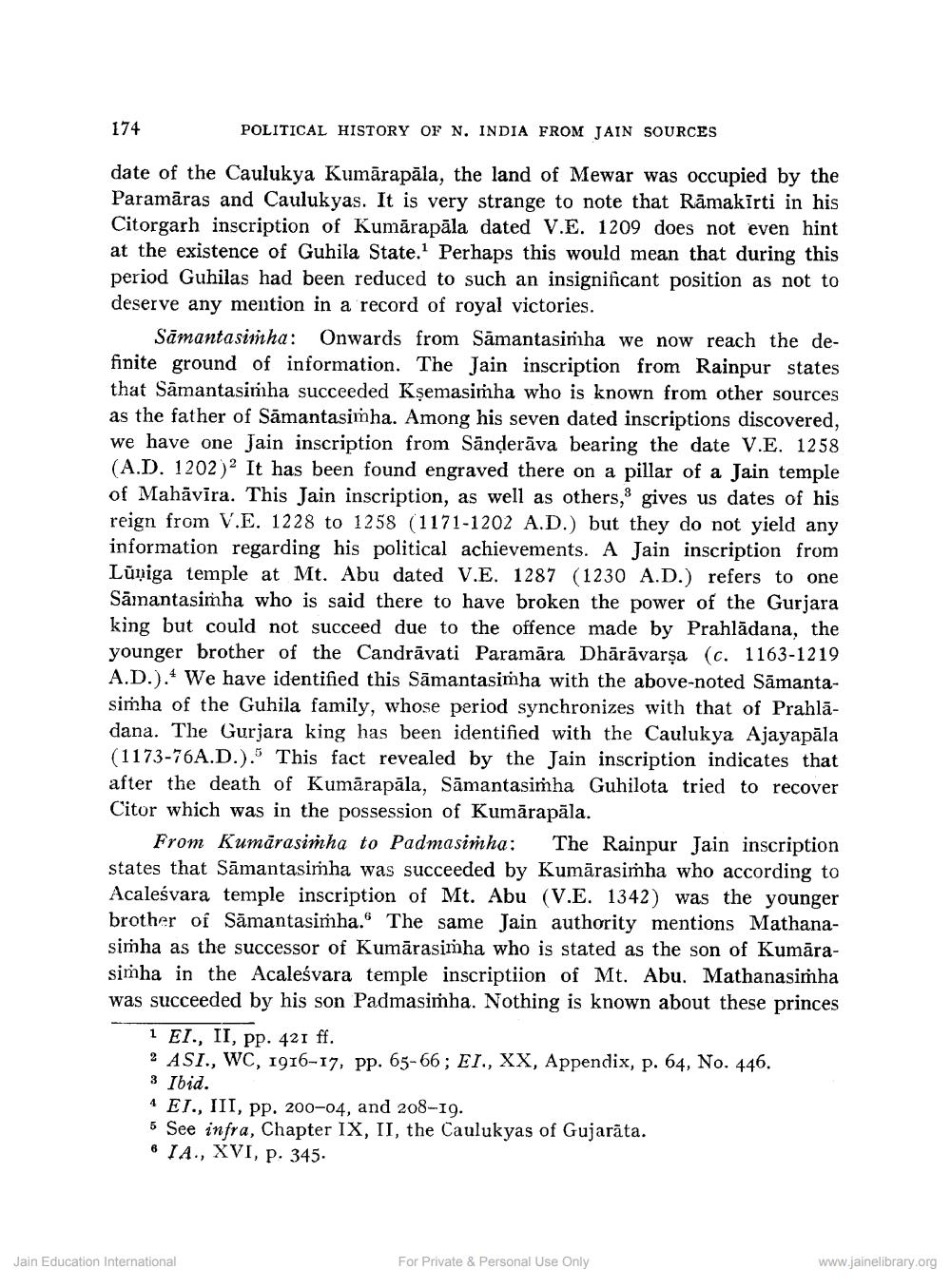________________
POLITICAL HISTORY OF N. INDIA FROM JAIN SOURCES
date of the Caulukya Kumarapala, the land of Mewar was occupied by the Paramāras and Caulukyas. It is very strange to note that Ramakirti in his Citorgarh inscription of Kumarapala dated V.E. 1209 does not even hint at the existence of Guhila State.' Perhaps this would mean that during this period Guhilas had been reduced to such an insignificant position as not to deserve any mention in a record of royal victories.
174
Samantasimha: Onwards from Samantasimha we now reach the definite ground of information. The Jain inscription from Rainpur states. that Samantasimha succeeded Kṣemasimhha who is known from other sources as the father of Samantasimha. Among his seven dated inscriptions discovered, we have one Jain inscription from Sänderäva bearing the date V.E. 1258 (A.D. 1202)2 It has been found engraved there on a pillar of a Jain temple of Mahavira. This Jain inscription, as well as others, gives us dates of his reign from V.E. 1228 to 1258 (1171-1202 A.D.) but they do not yield any information regarding his political achievements. A Jain inscription from Lupiga temple at Mt. Abu dated V.E. 1287 (1230 A.D.) refers to one Samantasimha who is said there to have broken the power of the Gurjara king but could not succeed due to the offence made by Prahladana, the younger brother of the Candrāvati Paramāra Dhärävarṣa (c. 1163-1219 A.D.). We have identified this Samantasimha with the above-noted Samantasimha of the Guhila family, whose period synchronizes with that of Prahladana. The Gurjara king has been identified with the Caulukya Ajayapala (1173-76A.D.). This fact revealed by the Jain inscription indicates that after the death of Kumarapala, Sämantasimha Guhilota tried to recover Citor which was in the possession of Kumarapala.
From Kumarasimha to Padmasimha: The Rainpur Jain inscription states that Samantasimha was succeeded by Kumarasimha who according to Acaleśvara temple inscription of Mt. Abu (V.E. 1342) was the younger brother of Samantasimha." The same Jain authority mentions Mathanasimha as the successor of Kumārasimha who is stated as the son of Kumarasimha in the Acaleśvara temple inscriptiion of Mt. Abu. Mathanasimha was succeeded by his son Padmasimha. Nothing is known about these princes
1 EI., II, pp. 421 ff.
2 ASI., WC, 1916-17, pp. 65-66; EI., XX, Appendix, p. 64, No. 446. 3 Ibid.
EI., III, pp. 200-04, and 208-19.
5 See infra, Chapter IX, II, the Caulukyas of Gujarata.
6 IA., XVI, p. 345.
Jain Education International
For Private & Personal Use Only
www.jainelibrary.org




